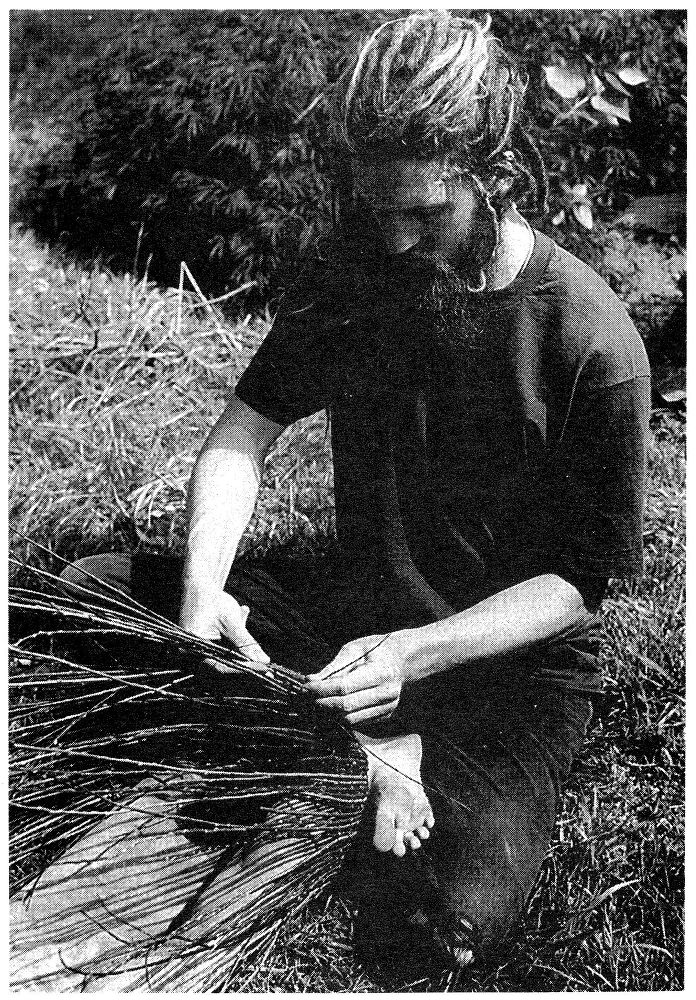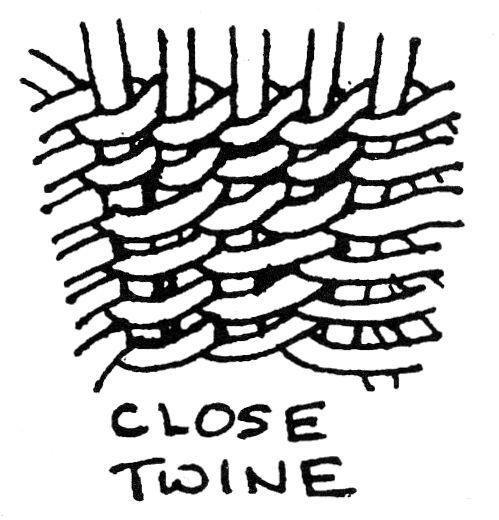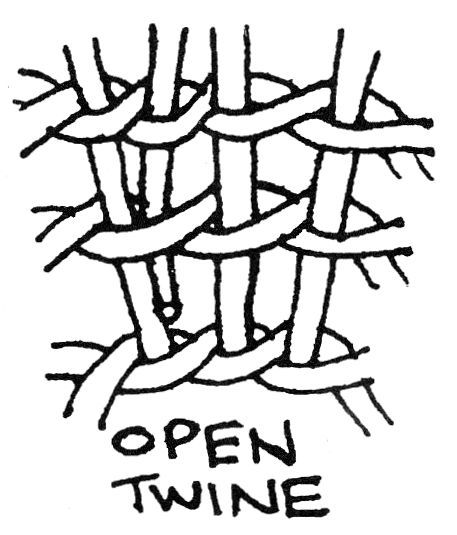The disadvantage to the clay pot cooking technique is that it is so time-consuming, more so than the pit when you consider the time it takes for the pots to dry before firing. The advantage—a hot stock pot. A ladle and spoon can easily be carved from wood, as can a bowl.
Whether you are in a survival situation or just out for enjoyment, cooking can be far more enjoyable when there are no pots and pans to scrub. And, regardless of the method you choose, I hope you find as much satisfaction in doing things the old way as I do.
If, for some reason, we decide to abandon the hectic, “good life” of our modern age and start living the real life, we will have to learn new ways to perform old tasks, like cooking. And the “new” ways would, ironically, really be the old ways of our ancient ancestors.
Tamara Wilder and Steven Edholm
Whole-Shoot Willow Baskets
Willows also contain salicin (which is essentially aspirin), so if you get a headache trying to follow our directions, just chew a “willer” twig.
Twining is one of several basic basketry techniques which is used worldwide. It is also thought to be one of the oldest. Whole shoots—shoots of plants that have not been modified, except by sometimes removing the bark—are often made into baskets using this technique.
There are a great many styles and shapes of baskets which fall under the classification of whole-shoot twining. Generally, use as well as local tradition dictate how they are constructed. In Europe, for example, whole-shoot baskets tend to be relatively large, heavy and of designs which lend themselves well to a sedentary agricultural lifestyle. By contrast, the less sedentary native peoples of Western North America traditionally tended towards whole-shoot baskets which used smaller shoots and were of more lightweight designs. These are the type of baskets which we will be discussing in this chapter.
Most of these native peoples had, and still have, highly advanced basketry traditions and wove very fine baskets for gathering, cooking, eating and storage. Many of these were woven tightly enough to hold liquids. While whole-shoot baskets are not always tight enough to fulfill these functions, they are much easier to construct. To make a refined basket requires many hours of preparation, splitting and trimming each element to size. On the other hand, there is very little time spent preparing a whole-shoot. Thus, for baskets that don’t need to be so finely woven and which are to be used for such activities as portaging or as bird and fish traps, it makes a lot of sense to use whole-shoots instead; saving finer baskets from excessive wear. This is not to say that finer baskets were never used or wouldn’t work for these purposes. It is only that, due to their relative ease of construction, whole-shoot baskets can be preferable for these applications.

Steven Edholm begins an “open weave” whole shoot basket. (Photo by Tamara Wilder)
These types of whole-shoot baskets can be made either close twined, open twined or more often a combination of the two. Close twining (each row of twining sitting directly above the other) is a stronger and more durable weave (fig. 1). However, a basket completely close twined can get fairly weighty.
Open twining (each row of twining spaced a short distance above the other) is a lot lighter but also less sturdy (fig. 2). In comparison, a basket with a closely twined bottom and rim, but an open twined body, is a good compromise. There are also many variations in splicing and adding techniques, starts and finishes. Traditionally, these change from region to region and from use to use, but here we will stick to one start, weave and splice.
Materials
While a variety of species provide good material for whole-shoot twining (see chapter by Pegg Mathewson on basketmaking materials), this text will be restricted to the use of willow.
True willows are trees and shrubs of the genus Salix. They occur throughout North America and have managed to adapt themselves to most, if not all, of its varied climates. Perhaps the most obvious and consistent characteristic of this genus is an affinity for water. Willows must have a source of moisture throughout the year and are often found in areas which are flooded in winter.
So when looking for willow, look for water (and vise-versa). Most rivers, creeks, seeps, springs, ditches and ponds have some species of willow growing on or near them. In fact, willows are so common that it’s likely that a willow plant or patch exists within easy walking distance of wherever you are.

Figure 1

Figure 2
Unfortunately, however, not all willows are flexible enough to use for this type of tight twining. We normally use the types which have narrow, silvery leaves, reddish bark, and are found in the more arid areas of the West. Our test for pliability is to tie an overhand knot in a small shoot without it cracking. This test piece should be of one year’s growth and without side branches, which brings us to the subject of management and what to collect.
Willows, under natural conditions, are often subject to fires and floods. They respond to these adversities with very rapid regrowth, producing clumps of long, evenly tapered shoots which have few or no side branches. These are the shoots that are desirable for basketry. As the tree grows from year to year, it branches out, the new growth becoming shorter, stubbier and more brittle. These are sometimes still usable, but the best shoots come from plants which were coppiced (cut back to ground level), burned, heavily pruned or damaged the previous winter and allowed to grow back through the summer. Harvesting every year, especially by coppicing, will produce the best results.
Harvesting
If you’re lucky, you will find some adventitious (growing wild) shoots on plants which were cut back, burned or flooded out, in the past few years. (Be cautious, though, about harvesting shoots on road sides unless you are sure herbicides have not been sprayed.) If you can find no adventitious shoots, cut some plants back during winter or early spring to gather the following year. Don’t clear-cut every willow patch you see; a few vigorous plants can yield quite a bit of weaving material.
If the shoots are gathered in the dormant season (from leaf drop to bud swell), the bark will adhere tenaciously. If they are harvested in early spring (just after bud break), the bark slips off easily. By mid spring, anything that was not cut will begin branching out and will become less desirable. We prefer to harvest during the dormant season and weave with the bark on. This way the shoots are less prone to cracking and have greater wear resistance.
You can harvest an array of shoot sizes, but you’ll only use two basic sizes for each basket, one for twiners and one for spokes. The spokes, or ribs, of your basket are the larger of the two. We suggest that you start with spokes that are a half to two-thirds the size of a pencil at the butt ends. The twiners should be about half the size of the spokes. A good handful of each will go a long way.
After harvesting, the willow can be used fresh, or it can be dried out and then reconstituted later. If used fresh it will shrink as it dries, making for a somewhat looser basket. However, we use fresh shoots a lot and they work fine as long as everything is pulled tight. If the willow is dried and reconstituted, the finished basket will be somewhat tighter and more stiff.